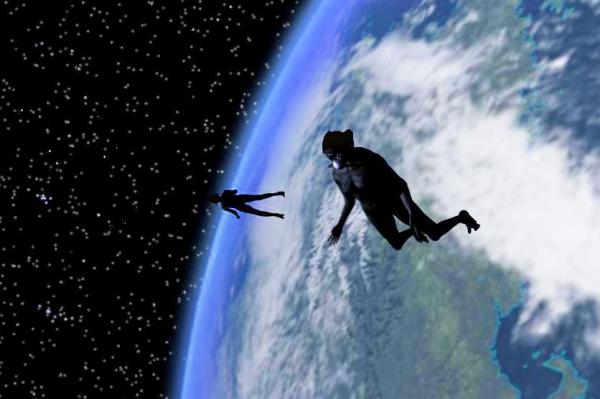BY LETTER
Vacuum Adapted Humans
 Image from Steve Bowers |
Homo cosmosapiens spatialis and other subspecies.
In the late Interplanetary Age, after the development of the original Space Adapted Humans, further developments in genetics led to further projects aimed at adapting humans to vacuum.
The first attempt at creating a vacuum tolerant phenotype was known as the Vacuum Capable Modified Human Project. The resulting tweaks, known somewhat perjoratively as the Vacc-Suckers, were not viable, and all died at an early age.
This failure had severe repercussions among the geneering profession. It was more than a century before the next attempt was made, resulting in the Deepspacers, also known as the Vacuum Adapted Human clade, revealed in 397 AT. The VAH clade was somewhat less ambitious than the earlier vacc-sucker concept, as a Deepspacer can only survive in a hard vacuum for an hour or so. Nevertheless they are more suited to survive in instances of ship or hab explosive decompression, low oxygen, and so on, until help arrives or the problem can be fixed.
As with the original microgravity adapts Homo Cosmoi, the new clade of spacers soon migrated outwards, finding ready employment among the megacorps keen to develop the outer solar system, the Kuiper belt and the Oort cloud. Like many deep space migrating clades of the time they were only mildly effected by the Technocalypse - in fact the most significant result of the Technocalypse was to drive them deeper into interstellar space.
In the 1000's some VAHs joined the Federation, but most preferred to stay aloof or colonise interstellar space on their own. They often supplemented their biological adaptations with tailor made bionano and hylonano augments. Over the centuries the spacers have developed into an independent branch of humanity, living together with baseline and near-baseline humans in some habitats but always a bit apart due to their easy access to space. Many spacer-only habitats exist.
VAH Spacers have a skin covered with enamel scales, feet with opposable thumbs, eyes covered with resilient lenses and a flexible membrane that when in space seals the nose and mouth. Considerable quantities of oxygen are stored in the blood and tissues of the Spacers and slowly released while they are in vacuum; a similar augmentation to the deep-sea diving abilities of the Merpeople. Their thick skin can function as a pressure suit when necessary.
Later clades derived from humans and other species, such as the Sailors and the Jotunn, were developed which could survive in vacuum for an almost indefinite period.
Related Articles
- Jötunn
- Pantropy
- Sailors of the Ebon Sea
- Space Adapted Human
- Space People - Text by M. Alan Kazlev
[1] (archaic) A common early term for Space Adapted Humans, still used by some descendants of the original clade.
[2] (Integration period) A term for vacuum adapted tweaks, now rarely used. - Sritht
- Thicksuit
- Vacc-Suckers
- Vacuum Equipment
Appears in Topics
Development Notes
Text by Anders Sandberg, with modifications by M. Alan Kazlev
Initially published on 19 August 2000.
Initially published on 19 August 2000.






